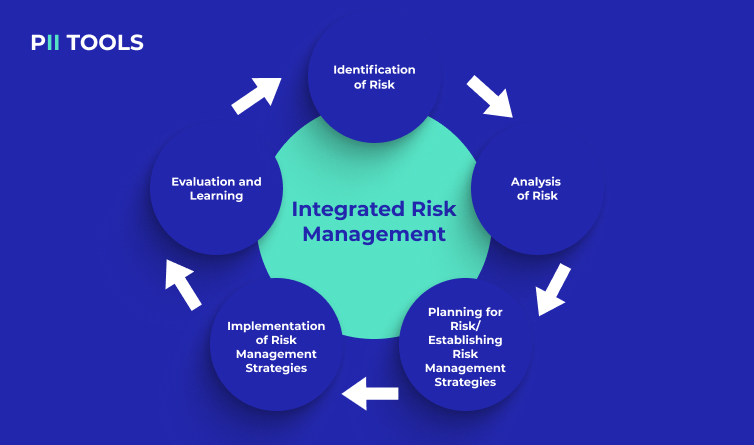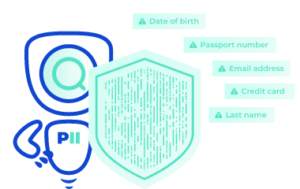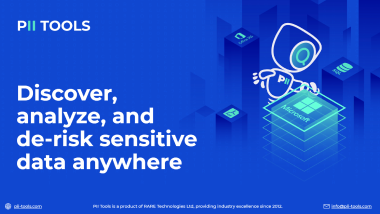What’s the worst thing about risks? They’re often hiding where you’d least expect them. So, let’s review a few best practices for finding and eliminating them.
IRM 101
Few words captivate audiences more than Integrated Risk Management (IRM). It’s easy to picture them displayed on a corporate slideshow for a room full of less-than-enthused paper pushers just waiting for their lunch break to start.
It’s safe to say many terms like “avoiding silos” and “creating a risk management strategy” can easily go in one ear and out the other. But what Integrated Risk Management lacks in sexy entertainment, it more than makes up for in cost savings, crisis preparedness, prioritization, and much more.
So, welcome to IRM 101. I’ll try to make this as enjoyable as I can.
What is IRM?
Whenever I sit down to contemplate the intricacies of IRM (something I do all the time), I’m reminded of this useful quote:

In plain English, Integrated Risk Management is an organization-wide approach to addressing risk that involves input from all teams and centers risk as a fundamental part of a business’s strategy.
In other words, proper IRM addresses the three fundamental areas of risk: technology/cyber risk, operational risk, and enterprise/strategic risk, and strives to manage, or even mitigate, them all.
Tech and Cyber Risks
It’s nice living in a modern world. Instant coffee machines, heated blankets, everyone posting their Spotify playlists… It’s hard to picture living without the everyday perks of the “tech age”.
But when it comes to running a successful and safe business, you will be more interested in protecting yourself from cybersecurity breaches, phishing attacks, ransomware, cloud security concerns, data privacy compliance… It’s like a never-ending list of nightmarish risk factors, keeping every unprepared DPO up at night.
Operational Risks
While tech and cyber risks hide in servers and unprotected files, operational risks frequently occur within the practical sphere. How a company runs on a day-to-day basis can present risks but also opportunities for efficiency improvements and innovation.
Supply chain disruptions, system crashes, HR-related problems, health and safety incidents, and even damage to a company’s reputation are all examples of potential operational risks.
Enterprise and Strategic Risks
If you think of running a business as playing a giant chess game, enterprise and strategic risks are inherently part of every Queen’s Gambit or Scandinavian Defence. One false move could be your last.
The publishers who passed on the Harry Potter books, as well as George Bell famously rejecting to purchase Google for a measly 1 million dollars, are examples of strategic decisions that, judging them over a decade later, turned out poorly.
But more common instances of enterprise and strategic risks come in the form of market competition, regulatory changes, global economic trends, and so on.
To Avoid Risk, Make a Plan
Now that we’ve touched on the problem, it’s time to present a solution. And the solution to every risk type mentioned above is to implement the most bullet-proof risk management strategy you can create.
Creating such an IRM strategy, however, is easier said than done. And because every company is different, there’s no such thing as a one-size-fits-all plan for everyone. But here are 3 basic steps to start building your Integrated Risk Management strategy.

Step 1
Perform an internal audit of your company to identify all potential risks. From the inside out, evaluate what areas of your business are susceptible to harm, including everything from financial risks to compliance issues.
Step 2
Raise a metaphorical shield by mitigating and controlling all identified risks. Do whatever it tasks: implement new policies, enhance your security measures, diversify suppliers, or even invest in new safeguarding tech or software.
Step 3
Develop a Crisis Response Plan. Even with the best strategy in place, it can never be perfect. But you can prepare for the worst by defining roles, responsibilities, and communication strategies to navigate your business through trying times.
The Right Tool for the Job
I wish I could tell you that’s all it takes. Read one article, apply “three easy steps”, and all your risks have been integrated and managed. Unfortunately, that’s never the case. We could easily talk about Integrated Risk Management for days on end.
You’re not here to read a novel, but you can get a massive headstart on your IRM strategy by deploying a proper data discovery solution. PII Tools and its AI-driven tool will help you locate, analyze, and remediate sensitive data throughout all your storages.
The right time to protect your company from all risks – seen and unseen – is right now. Let PII Tools do most of the heavy lifting and incorporate it into your own Integrated Risk Management strategy today!
Get a Jump on a Fully Optimized IRM Strategy with a FREE PII Tools Demo!




